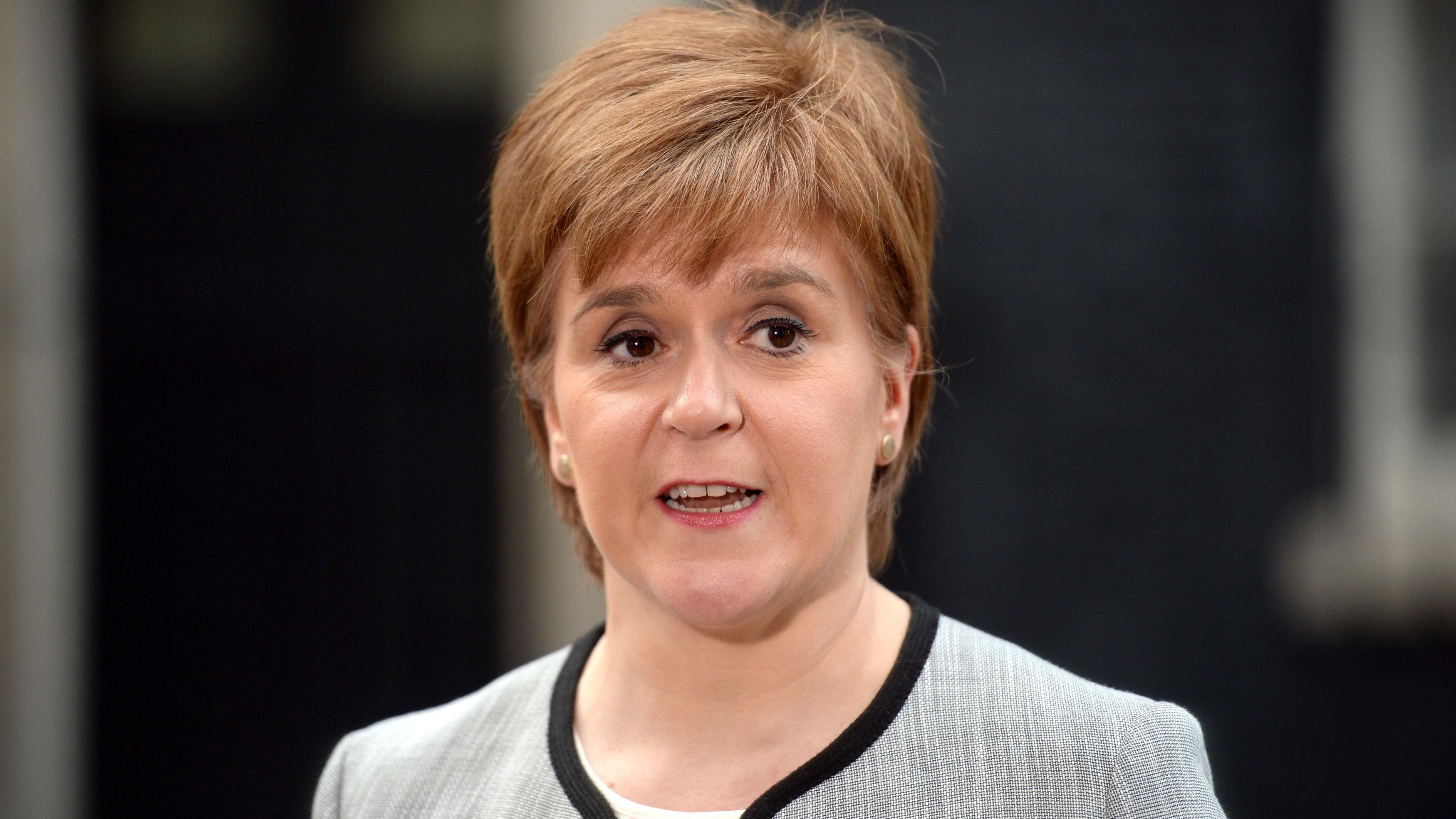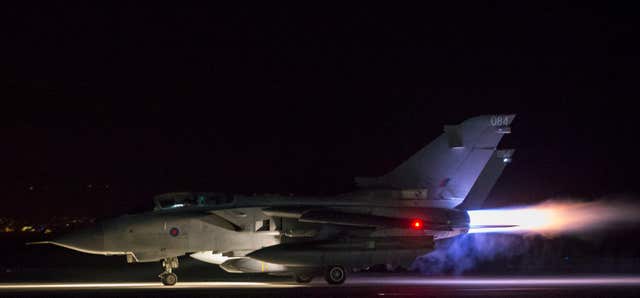
NICOLA STURGEON has said UK foreign policy should be set by Parliament and not Donald Trump after the US, UK and France launched missile strikes against Syria.
Scotland’s First Minister said the suspected use of chemical weapons in Douma last week was “sickening” but warned that the latest action risked “dangerous escalation”.
Air strikes have not resolved situation in Syria so far – nothing I’ve heard persuades me they will do so now. An international strategy for peace must be pursued – not a course that risks dangerous escalation. UK foreign policy should be set by Parliament, not US President.
— Nicola Sturgeon (@NicolaSturgeon) April 14, 2018
Writing on Twitter, she said her first thoughts were with service personnel taking part in the strikes, which targeted infrastructure at three sites connected with the Syrian regime’s chemical weapons programme.
Ms Sturgeon said: “Syria’s use of chemical weapons is sickening – but the question that the PM has not answered is how this action, taken without parliamentary approval, will halt their use or bring long-term peace.
Russia warns of ‘consequences’ after US, UK and France launch airstrikes against Syria
“Air strikes have not resolved situation in Syria so far – nothing I’ve heard persuades me they will do so now.
“An international strategy for peace must be pursued – not a course that risks dangerous escalation.
“UK foreign policy should be set by Parliament, not US President.”
As the UK wakens up to the news that armed forces have been deployed through the night, the Prime Minister’s Chief of Staff, @GavinBarwell, is on Twitter fighting with MPs. You’d think he’d have something a bit more urgent on his plate right now…
— Stewart McDonald MP (@StewartMcDonald) April 14, 2018
SNP defence spokesman Stewart McDonald said UK forces were engaged in “gesture bombing with no major international consensus and no long term plan to halt the use of chemical weapons or deliver peace”.
He wrote on Twitter: “Most worrying is that she has acted at the behest of presidential tweets and sidelined Parliament.
“What does this new bombing campaign do to help move Syria towards peace? Nothing.
Two initial observations:
1. The UK needs a War Powers Act, which sets in law the the limitations on government to deploy military force without parliamentary consent. Parliament & government’s role needs to be defined
2. We need to strengthen the Chemical Weapons Convention
— Stewart McDonald MP (@StewartMcDonald) April 14, 2018
“Instead, it has the potential to dangerously complicate the war, making matters on the ground worse for the people that the strikes are supposed to help. There is no peace strategy.
“This is not a brave or strong decision by the Prime Minister.”
What we know so far
– Strikes were launched at 2am BST at three sites connected with the Syrian regime’s chemical weapons programme.
– The first was at a scientific research centre in greater Damascus involved in the development and production of chemical weapons, the second at a chemical weapons storage facility near Homs, and the third at a chemical equipment storage facility and important command post.
https://twitter.com/Dalatrm/status/984968585859739648
– The US said “important infrastructure” had been destroyed, resulting in the loss of years of research and development for the Syrian regime.
– Four Royal Air Force Tornados contributed to the strikes, launching Storm Shadow missiles.
– US Defence Secretary Jim Mattis said double the number of weapons had been used in the strikes compared with the 2017 Shayrat missile strike which involved 59 US Tomahawk cruise missiles and was launched in response to the Khan Shaykhun chemical attack.

– Mr Mattis and General Joseph Dunford said there were no reports of any allied losses. Syrian state-run TV later reported that three civilians had been wounded.
– General Dunford described the operation as a “one-time shot”, and said no additional attacks were planned, but added that the powers that had signed the Organisation for the Prohibition of Chemical Weapons had every reason to challenge Syrian President Bashar Assad if he chose to violate it. The allies remained in close consultation, he said.
– The only retaliatory action was some Syrian surface-to-air missile activity, the US said.
– General Dunford confirmed there was no co-ordination with the Russians and that they were not given prior notification of the strikes.

– Prime Minister Theresa May said the decision to launch the strikes was not taken lightly, but she believed it to be in the UK’s national interest.
– Every possible diplomatic channel had been explored prior to the strikes, Mrs May added.
– Syrian state TV called the attacks a “blatant violation of international law and shows contempt for international legitimacy”.
– US President Donald Trump condemned Syria’s two main allies, Russia and Iran, for supporting “murderous dictators”.
– In response, the Russian embassy in the US said it had warned that such actions would “not be left without consequences”, adding that insulting President Vladimir Putin was “unacceptable and inadmissible”.

Enjoy the convenience of having The Sunday Post delivered as a digital ePaper straight to your smartphone, tablet or computer.
Subscribe for only £5.49 a month and enjoy all the benefits of the printed paper as a digital replica.
Subscribe